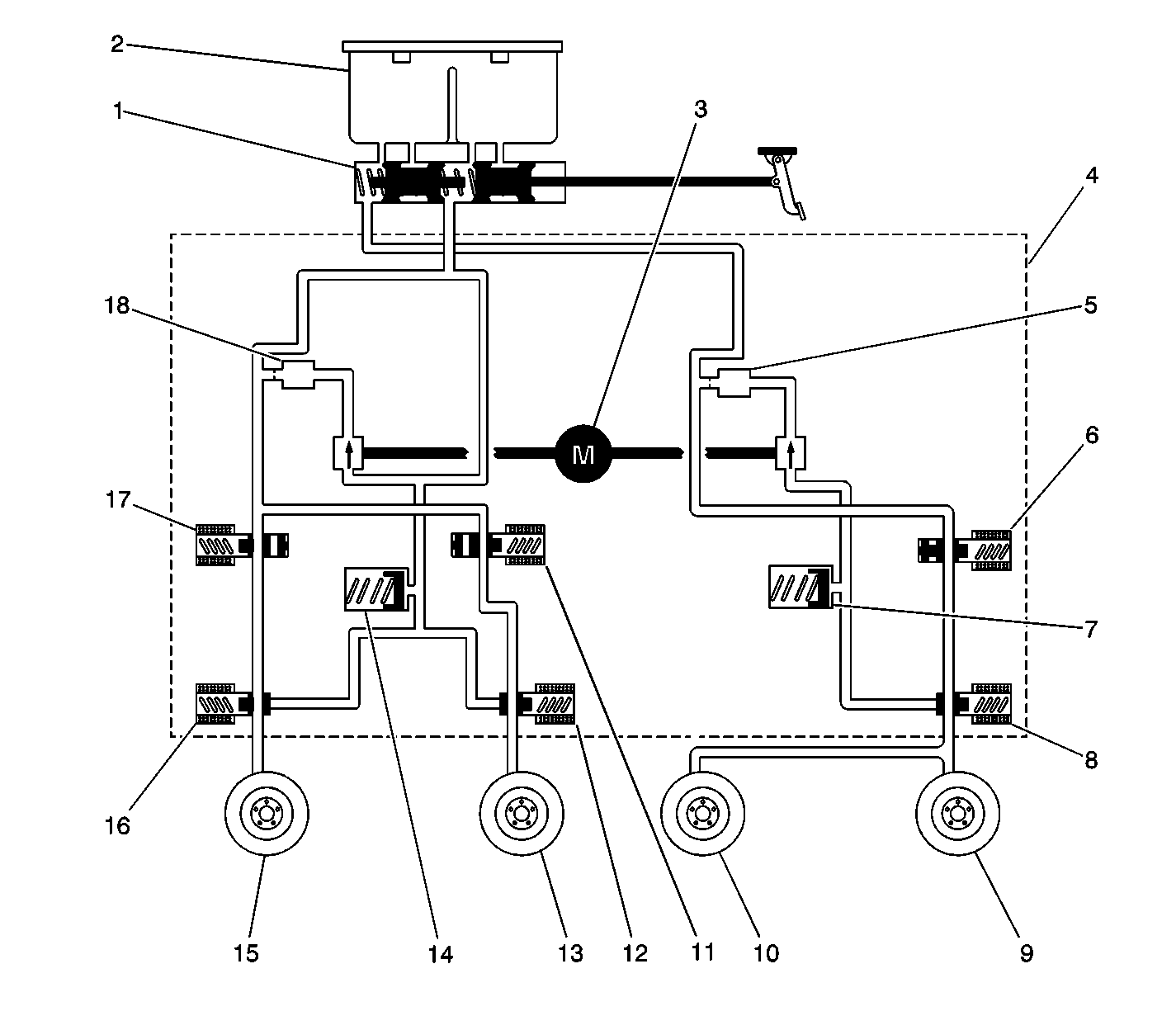The system uses an amber ABS indicator lamp in the instrument cluster
in order to show system operation and malfunctions.
A bulb check occurs each time the ignition switch is turned to the RUN
position. The ANTILOCK and BRAKE lamps should turn on, remain on for about
two seconds, then turn off. The ABS indicator lamp also indicates system
malfunctions. When the EBCM detects a malfunction in the system, the EBCM
turns the ANTILOCK and sometimes the BRAKE lamp on. The lamp may remain on
or turn off depending on the malfunction. In order to determine the specific
cause of the malfunction, refer to the appropriate diagnostic system check.
Correct tire size, proper inflation, accurate alignment and even wear
are needed for good brake performance. These items are essential for proper
ABS performance.
Use of the spare tire supplied with the vehicle will not affect the
performance of the system.
If the replacement tires are not the same size as the original tires,
you must change the tire size calibration within the EBCM using a Scan Tool
. Failure to change the tire calibration
when replacing the original tires with a different size tire can affect
the performance of the ABS.

